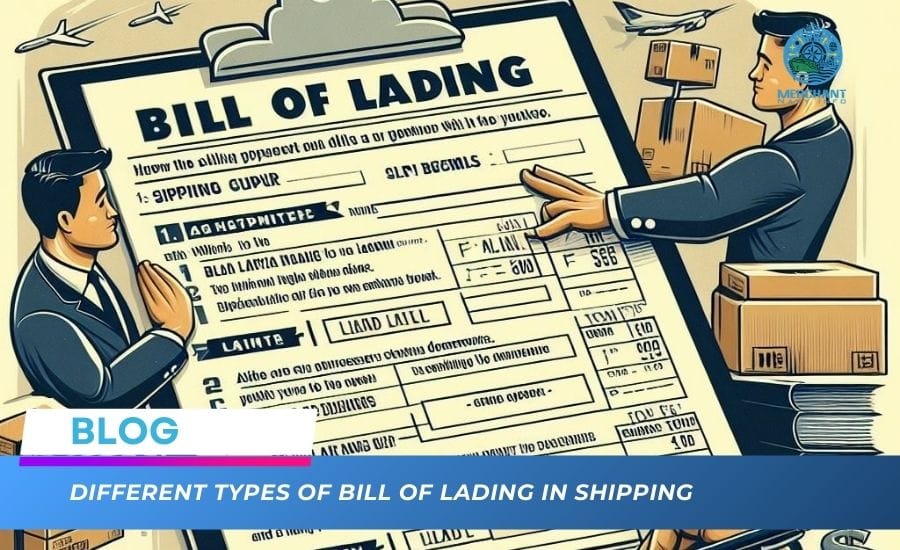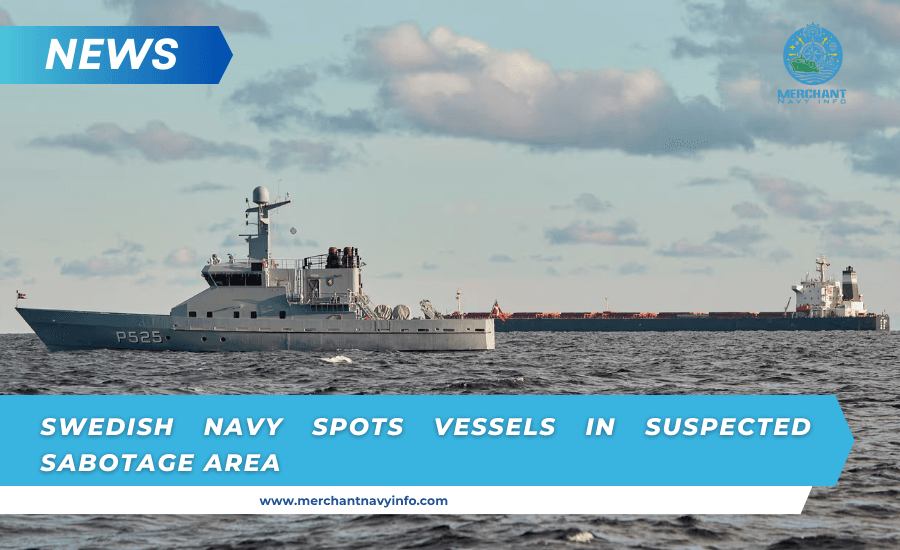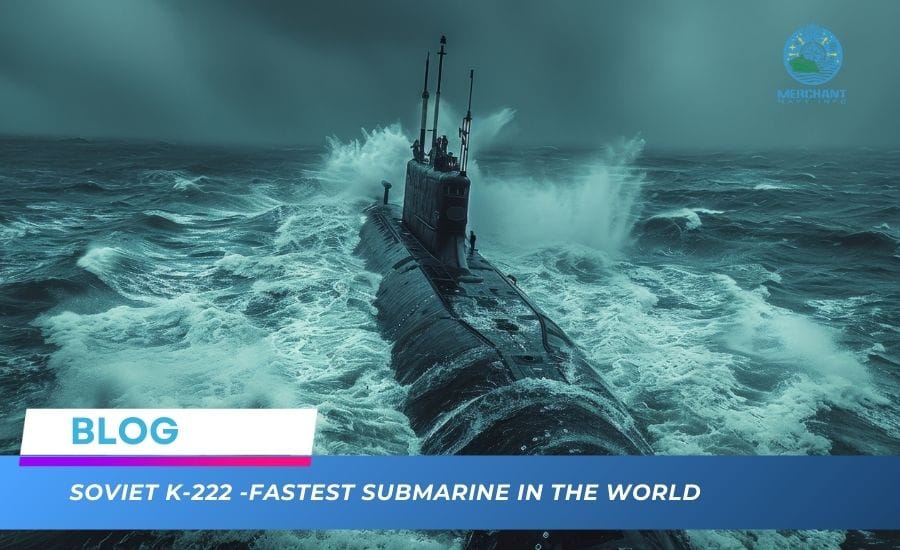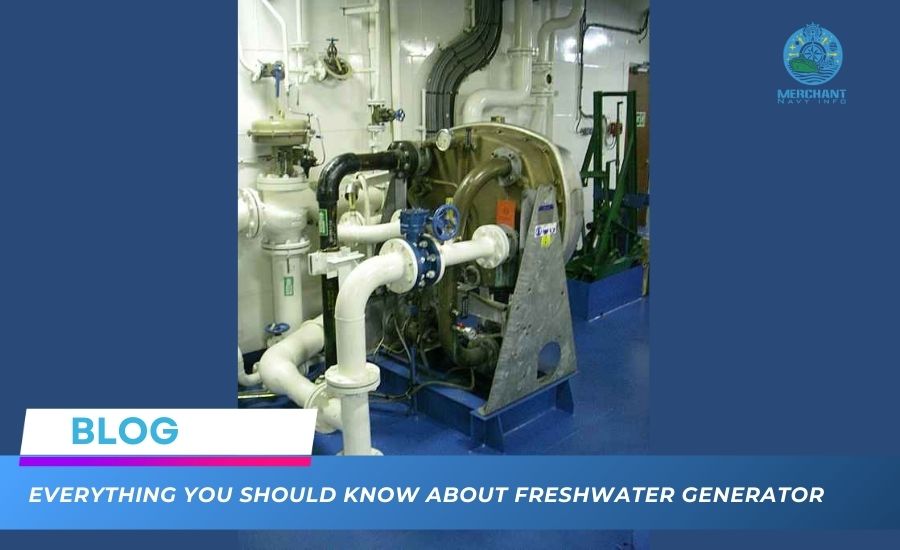
Everything You Should Know About Fresh Water Generator
A fresh water generator converts seawater (brine) into freshwater. They are common on many ships and allow the ship to produce the freshwater it needs while at sea. The process of producing freshwater is distillation.
There are three main ways to produce freshwater from seawater: boiling, evaporation, and reverse osmosis (RO). Most ships and industrial plants use evaporators or reverse osmosis plants to produce fresh water. Large desalination plants can be connected to the steam loop of a thermal power plant, using steam to evaporate seawater.
The 3D models are based on low-pressure flash evaporators (flash distillers) using plate heat exchangers, but freshwater generators using tubular heat exchangers are also available.
What are the main components of a fresh water generator?
A fresh water generator consists of the following main components:
- Hot and cold water connections.
- Shell
- Condenser
- Evaporator
- Demister
- Fresh Water Pump
- Ejector/Eductor
- Temperature Monitoring Devices
- Air-Purge Valve
- Safety Relief Valve (SRV)
- Salinometer
Fresh water generator components
All the above components are explained in more detail below.
The low-pressure freshwater evaporator is connected to the seawater and hot water systems. On ships, seawater is obtained directly from the seawater tank, while hot water is obtained from the engine case water system (engine cooling water system).
The fresh water generator has a condensing plate heat exchanger on the upper part and an evaporator plate heat exchanger on the lower part. The condenser allows seawater to pass through the heat exchanger in a closed system, while the evaporator allows hot water to pass through the heat exchanger in a closed system.
Moreover, the condenser and the evaporator are not completely sealed heat exchangers because the gaskets are modified to allow seawater to evaporate from the evaporator plates and fresh water to condense on the condenser plates. In short, a plate heat exchanger usually has two fully closed systems, but in a plate heat exchanger, each heat exchanger has one closed system and the other open system.
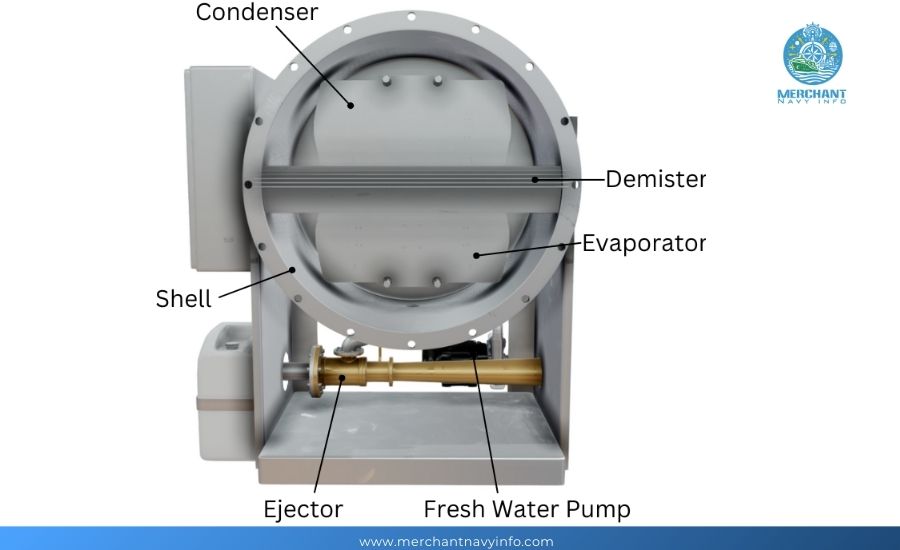
The demister is installed between the condenser and the evaporator.
The condenser, evaporator, and demister are placed inside the shell of the plate heat exchanger.
A freshwater pump (usually a small centrifugal pump) pumps water from the plate heat exchanger condenser into the storage tank.
The ejector/ejector is used to create and maintain a vacuum inside the shell; it also removes brine (high-salinity water) from the bottom of the casing.
The temperature inside the casing, seawater, and shell water system are continuously monitored using a thermometer (local indicator) and a PT 100 sensor (remote indicator).
An air purge valve is installed on the top of the shell. When the FWG is not in operation, the air purge valve must be open; when it is in operation, it must be closed.
A safety relief valve (SRV) is installed on the upper side of the shell as a precaution against overpressure.
A salinity meter measures the salinity of the resulting fresh water. If the salinity of the freshwater is too high, it is discarded/rejected (usually in ballast). If the freshwater is within limits (usually <10 ppm), it is sent to the freshwater storage tank.
How does a fresh water generator work?
Seawater is pumped from the seawater tank to the FWG condenser. It passes through the condenser, then the evaporator, and finally through the ejector. A small amount of seawater is transferred directly from the condenser to the ejector, which maintains the vacuum inside the shell. The seawater passes through the condenser first because it absorbs some heat before entering the evaporator, which increases the overall efficiency of the FWG.
Shell water is pumped from the main engine to the FWG evaporator. The shell water temperature is about 80°C (176°F). Since the jacket is under vacuum, 80°C is enough to evaporate part of the seawater that passes through the evaporator. It is important not to evaporate too much seawater because this will cause salt to form on the panels.
How does a fresh water generator transform seawater into freshwater for consumption?
The water from the evaporator forms a mist that passes through the demister. The demister removes any remaining salt; the water mist then reaches the condenser. Since the condenser plates are below the condensation temperature of the spray water, the spray water condenses on the condenser plates. The condensed fresh water is then extracted using a freshwater pump.
Water Treatment
The freshwater that comes out immediately after the FWG is called distilled water and is used for applications such as washing, cleaning, etc. Drinkable water is obtained by correcting the water’s pH and then passing it through a mineralization unit and a bacterial treatment unit.
Chemical doses and UV filters are the most common bacterial treatment equipment. For the health and well-being of drinking water consumers, the bacteria level must be constantly monitored and controlled.
Hardness is caused by magnesium and calcium ions in the water. It is a problem because it tends to form scale on system surfaces (such as those of heat exchangers, pipes, etc.). A water softener adds sodium (salt) to the water to reduce the hardness and potential for scaling.
Converting seawater into fresh water on board
The fresh water generator is one of the most important machines on board. The freshwater produced by the generator is used for drinking, cooking, washing, and even operating other important machines that use fresh water as a cooling medium.
Fresh water is usually produced on board by evaporation. Two abundant resources on board produce fresh water: seawater and heat. Therefore, fresh water is produced by evaporating seawater using heat from any heat source. The evaporated seawater is then cooled by seawater again, and the cycle repeats.
Video: Wave-amplifying Generator Bounces Twice As High As The Swells
The available heat source is generally taken from the main engine casing water, which is used to cool the main engine parts, such as the cylinder head and liner. The available temperature of the casing water is about 70°C. However, water cannot evaporate at this temperature, as it is known that water evaporates at 100 degrees Celsius under atmospheric pressure.
Fresh water generator
So, to produce fresh water at 70 degrees, we need to reduce the atmospheric pressure, which is achieved by creating a vacuum in the chamber where evaporation occurs. Due to the vacuum, the evaporated seawater is also cooled at a lower temperature. This cooling water is collected and transported to the water tank.
Video: Wave-amplifying Generator Bounces Twice As High As The Swells
Today, reverse osmosis is one method used on ships to produce fresh water. It is generally used on passenger ships with high freshwater production requirements. However, in commercial vessels, evaporation methods are used because reverse osmosis is expensive and involves a lot of membrane maintenance costs.
Fresh Water Generator Arrangement
The main structure of the ship’s fresh water generator consists of a large cylinder with two chambers: the condenser and the evaporator. The generator also contains an inductor that helps create the required vacuum. Fresh water pumps and jet pumps help move water in and out of the generator.
Starting the Fresh Water Generator
Before starting the freshwater generator, we must ensure that the ship is not in crowded waters or channels and is 20 nautical miles from the coast. This is done because wastewater from factories and sewage discharged into the sea near the coast can enter the freshwater generator.
- Check whether the motor is running above 50 rpm. At low speed, the jacket water temperature is around 60 degrees, which is not enough to evaporate water.
- Check whether the safety valve at the bottom of the generator is in the closed position.
- Now open the suction and discharge valves of the seawater pump. The pump uses the feed water for evaporation and cooling and provides a vacuum.
- Open the seawater drain valve, and the water circulating inside the freshwater generator is sent back to the sea.
- Close the vacuum valve on top of the generator.
- Now, start the seawater pump and check the pump pressure. The pressure is usually 3-4 bar.
- Wait for the vacuum to build up. The vacuum should be at least 90%, as shown by the pressure gauge on the generator. It usually takes about 10 minutes to build up the vacuum.
- When the vacuum is reached, open the valves to treat the feed water and prevent deposits inside the plates from forming.
- Now, slowly open the hot water inlet and outlet valves (casing water) to about halfway. Always open the outlet valve first and then the inlet valve. Slowly start increasing the opening of the valves until they are fully open.
- Now, we can see that the boiling temperature increases and the vacuum decreases.
- The vacuum decreases to about 85%, indicating the evaporation process has started.
- Open the valve from the freshwater pump to the drain.
- If the salinometer must be operated manually, operate it. It is usually in autoplay mode.
- Now turn on the freshwater pump and taste the water from the drain pipe.
- When fresh water starts to be produced, the boiling point drops slightly again, and the vacuum returns to normal values.
- Check the water coming out of the salinity meter for salt and the reading of the salinity meter. This is done to determine whether the salinity meter is working properly and prevent the fresh water from being contaminated by salt water. The salinity meter value remains below ten ppm.
- After checking the water’s taste with the salinity meter, open the pump’s tank valve and close the drain valve.
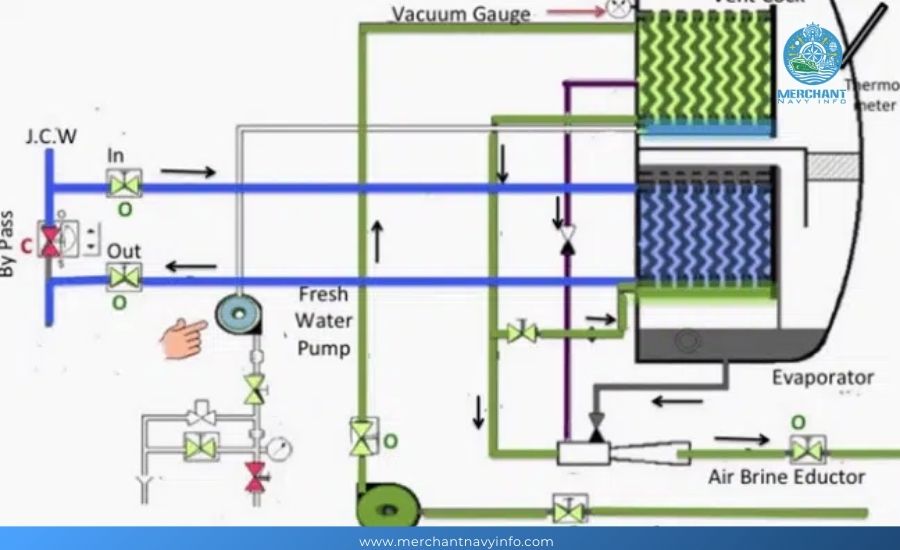
Turn off the freshwater generator.
- Close the jacket’s inlet valve. Generally, close the inlet valve first, then the outlet valve.
- Close the feedwater treatment valve.
- Turn off the freshwater pump.
- Turn off the salinity meter.
- Turn off the seawater pump (also called a jet pump).
- Open the vacuum valve.
Biggest Aircraft Carrier – Gerald R. Ford
Close the seawater suction valve and discharge valve. Generally, this is not necessary because they are non-return valves. However, if a leak occurs or the valve is damaged, these valves must be closed immediately.

